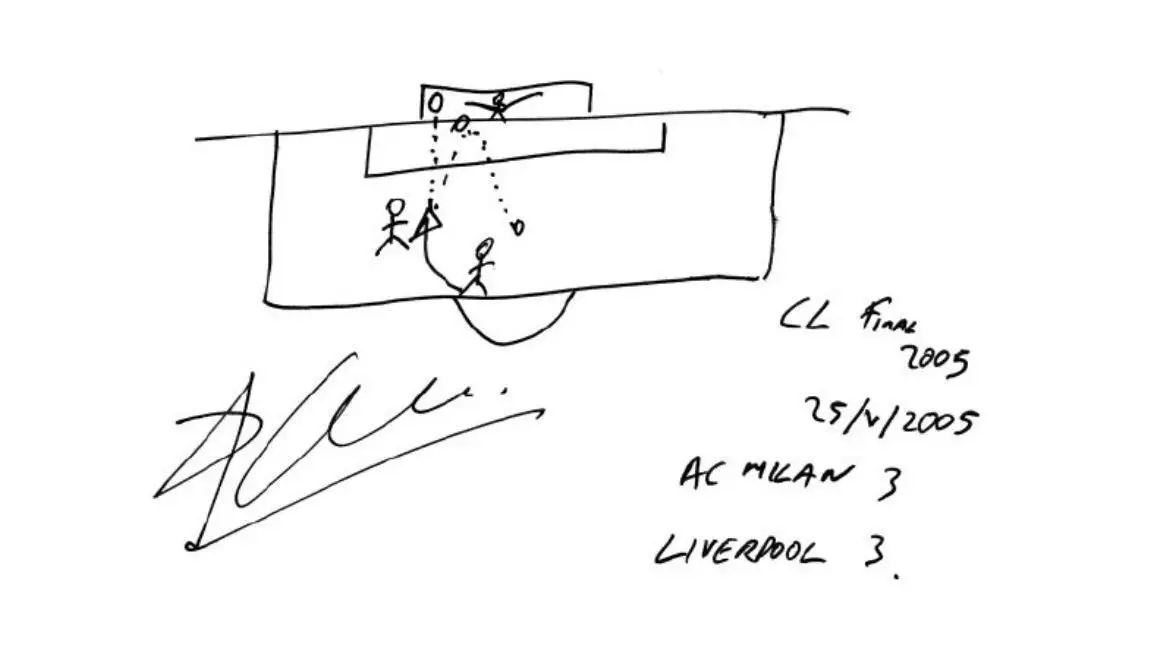Football, often revered for its tactical formations and physical prowess, seems to reach its zenith at the moment of a goal. The electrifying euphoria that emerges as the ball finds the back of the net is unparalleled in the world of sports. This notion is carefully encapsulated in the work of German journalist Javier Cáceres, who embarks on an extraordinary quest to explore the artistry of goal-scoring. Through his unique project, he captures the essence of football goals not just through words, but through the vivid individual sketches produced by some of the game’s most iconic figures.
Cáceres stands out in a crowded field of football journalists, using his platform to delve deeper into the narratives behind the goals that have defined matches, tournaments, and even careers. The journey began in 2005 when the former Chilean international Leonel Sánchez recreated his famous goal against the Soviet Union in the 1962 World Cup on a notepad. It was this moment that sparked an innovative idea: asking football players to draw their own unforgettable goals, thus breathing life into the stories that often fade in the haze of time.
“Tore Wie Gemalt,” or “Goals as Portraits,” showcases the incredible compilation that has blossomed from Cáceres’ initial inspiration. This collection features contributions from legends including Pelé, Franz Beckenbauer, and Bobby Charlton, as well as contemporary stars such as Xabi Alonso and Kai Havertz. Each sketch serves as a portal to a specific moment, a visceral reminder of not just scoring but the emotions and memories attached to each goal.
One striking example comes from Jorge Valdano, who vividly encapsulates his special goal in the 1986 World Cup final. Assisted by the incomparable Diego Maradona, Valdano’s goal not only sealed victory for Argentina but also stands as a historical landmark in football. Valdano’s detailed sketch underscores the richness of the narrative, illustrating that every goal holds an untold story, intricately woven between players and their emotions.
The diversity among players extends beyond their footballing skills; it manifests vividly in how each athlete chooses to portray their experiences. Take, for instance, Pep Guardiola, a coach primarily celebrated for his strategic acumen rather than his goal-scoring abilities. His sketch is a meticulous depiction, reflecting his analytical mastery within the game. This contrasts sharply with Xavi Hernández’s more artistic interpretation, which appears almost whimsical while effectively capturing the drama of a late-game El Clásico winner over Real Madrid. Xavi’s choice of simple stick figures layered with intricate details mirrors the observation that the very act of scoring can inspire both precision and creativity.
This interplay between technicality and artistry compels observers to appreciate that a goal is more than just a statistic; it conveys individuality and emotional resonance unique to each player. As Cáceres observes, these sketches allow players an opportunity to reminisce and share dimensions of their careers often overshadowed by competitive discourse.
While the book captures a wide array of historical moments, it also manages to link the past with the present. Contemporary players such as Kai Havertz are included, illustrating that the quest for a defining moment transcends eras. Havertz’s sketch of the goal that won Chelsea the 2021 Champions League final serves as a testament that modern players are already crafting their legacies.
Cáceres notes a poignant reason behind the scarcity of current players eager to share their defining moments: they’re still actively seeking to create that ultimate goal that will characterized their careers. This generational divide allows fans to reflect on football’s evolution, while simultaneously yearning for the defining moments yet to come.
As with all ambitious projects, Cáceres faced challenges in reaching certain icons, including Diego Maradona and Johan Cruyff. Ironically, a near miss in arranging a meeting with Maradona poignantly captures the essence of these legends—legendary not only for their skills but for their larger-than-life personas. The whimsicality of Maradona’s notorious tardiness underscored the fact that, for players of such stature, their last-minute heroics often carried more weight than timekeeping.
While it is unfortunate that certain legends could not contribute to “Tore Wie Gemalt,” the book nevertheless serves as a beautiful tribute to the moments that have shaped football history. It becomes a mosaic of performances and emotions that fans and players alike will cherish, emphasizing that every goal is indeed a work of art.
Javier Cáceres’ remarkable initiative transcends mere documentation of football goals; it provokes conversations about the essence of sport itself. Each sketch, rooted in a personal narrative, invites us to engage with football on an emotional level, making it clear that every goal scored carries with it a rich tapestry of history and personal experience. This exploration reveals that the heart of football is not solely in the glory of victory, but in the stories that arise when the net ripples and joy erupts, capturing the fleeting but unforgettable beauty of the game.

